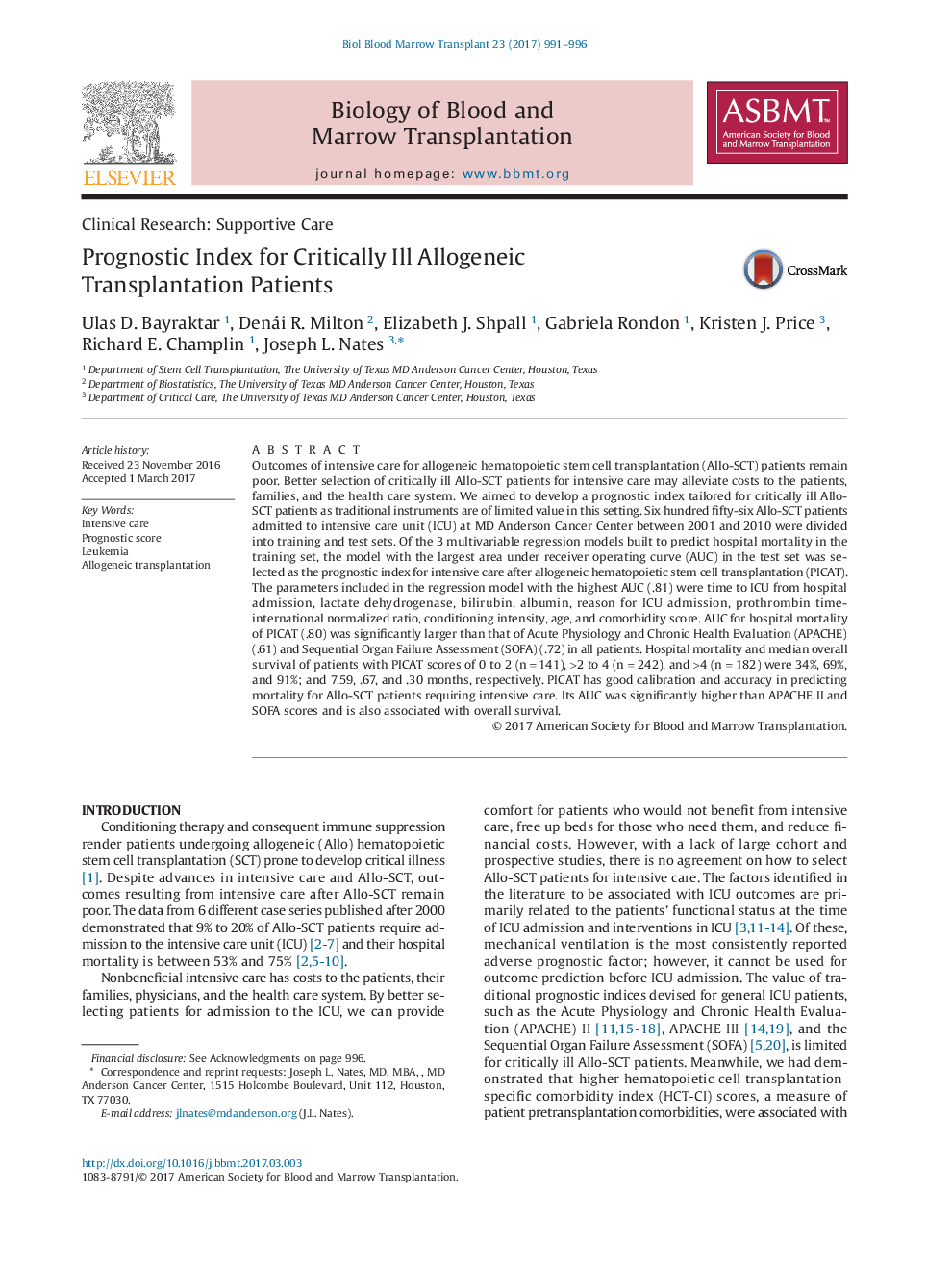| کد مقاله | کد نشریه | سال انتشار | مقاله انگلیسی | نسخه تمام متن |
|---|---|---|---|---|
| 5524188 | 1546240 | 2017 | 6 صفحه PDF | دانلود رایگان |
- Prognosis of transplantation patients admitted to the intensive care unit is poor
- The prognostic index for intensive care after allogeneic hematopoietic stem cell transplantation (PICAT) incorporates patient-, disease-, and transplantation-related factors
- PICAT has good calibration and accuracy in predicting mortality in intensive care unit
- PICAT is better than the Acute Physiology and Chronic Health Evaluation and Sequential Organ Failure Assessment in predicting mortality
Outcomes of intensive care for allogeneic hematopoietic stem cell transplantation (Allo-SCT) patients remain poor. Better selection of critically ill Allo-SCT patients for intensive care may alleviate costs to the patients, families, and the health care system. We aimed to develop a prognostic index tailored for critically ill Allo-SCT patients as traditional instruments are of limited value in this setting. Six hundred fifty-six Allo-SCT patients admitted to intensive care unit (ICU) at MD Anderson Cancer Center between 2001 and 2010 were divided into training and test sets. Of the 3 multivariable regression models built to predict hospital mortality in the training set, the model with the largest area under receiver operating curve (AUC) in the test set was selected as the prognostic index for intensive care after allogeneic hematopoietic stem cell transplantation (PICAT). The parameters included in the regression model with the highest AUC (.81) were time to ICU from hospital admission, lactate dehydrogenase, bilirubin, albumin, reason for ICU admission, prothrombin time-international normalized ratio, conditioning intensity, age, and comorbidity score. AUC for hospital mortality of PICAT (.80) was significantly larger than that of Acute Physiology and Chronic Health Evaluation (APACHE) (.61) and Sequential Organ Failure Assessment (SOFA) (.72) in all patients. Hospital mortality and median overall survival of patients with PICAT scores of 0 to 2 (nâ=â141), >2 to 4 (n = 242), and >4 (n = 182) were 34%, 69%, and 91%; and 7.59, .67, and .30 months, respectively. PICAT has good calibration and accuracy in predicting mortality for Allo-SCT patients requiring intensive care. Its AUC was significantly higher than APACHE II and SOFA scores and is also associated with overall survival.
Journal: Biology of Blood and Marrow Transplantation - Volume 23, Issue 6, June 2017, Pages 991-996
